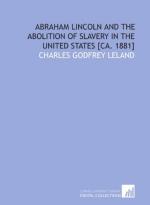|
This section contains 2,717 words (approx. 10 pages at 300 words per page) |

|
SOURCE: Oldfield, J. R. “Abolition at the Grass-Roots Level.” In Popular Politics and British Anti-Slavery: The Mobilisation of Public Opinion against the Slave Trade 1787-1807, pp. 125-54. Manchester: Manchester University Press, 1995.
In the following excerpt, Oldfield examines antislavery literature aimed at British children, which its authors believed would ultimately be beneficial in spreading the abolitionist message to the public at large.
Just as abolitionists sought to reach and influence women, so, too, did they try and influence children. As J. H. Plumb argues, after 1700 children ‘became luxury objects upon which their mothers and fathers were willing to spend larger and larger sums of money, not only for their education, but also for their entertainment and amusement’.1 Children, in effect, became consumers. The trade in toys, the spectacular growth in children's literature, and the increasing number of private schools and academies were all evidence of ‘a remarkable change in...
|
This section contains 2,717 words (approx. 10 pages at 300 words per page) |

|


